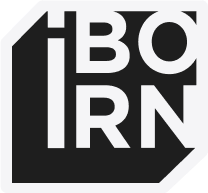Imagine your work as a finely tuned machine, where every part plays a crucial role in making the whole system run smoothly. When those parts aren’t aligned, even the best designs can lead to confusion and inefficiency. This is where the Objective and Key Results (OKR) framework plays a vital role. The alignment acts as a clear blueprint, guiding your team and ensuring everyone understands their role in achieving shared goals.
By embracing the OKR framework, companies can streamline their processes and foster a culture of alignment. But this isn’t just about setting goals; it’s about creating a shared vision that drives success. So with this in mind, let’s dive into the reasons why adopting this framework is essential when developing products, delivering the clarity and focus needed to streamline the efforts.
Why OKR Framework is essential for agile teams
-
Establishing clear priorities in a complex environment
Agile teams juggle projects, sprints, and fast-evolving requirements, so focus is crucial. OKRs provide a crystal-clear hierarchy of priorities, enabling teams to understand what matters most in a given quarter, sprint, or project. They serve as a compass, ensuring that agile adjustments always support core objectives. -
Cross-team alignment
In a collaborative environment where each team moves at its own pace, alignment across functions is vital. OKRs connect company-wide objectives with team goals, creating transparency. Product, engineering, and UX are no longer just “keeping pace”-they’re moving together, synchronized with the company’s strategic direction. -
Accountability through measurable key results
Agile thrives on iteration, but iteration needs accountability to drive real progress. OKRs introduce measurable outcomes that agile teams can aim for, assess, and refine. These metrics allow teams to see what’s working and pivot where necessary, without losing sight of the end goal. -
Empowerment and ownership
OKRs empower teams to take ownership. With shared objectives and measurable targets, team members gain clarity about their role in achieving these outcomes. This sense of ownership fosters motivation, encouraging teams to solve problems creatively and stay invested in the organization’s success.

OKRs and strategic alignment
Agile organizations are built on collaboration and speed, but when goals vary across teams, priorities can become tangled. OKRs serve as the backbone of a unified strategy, anchoring every team to the same vision while respecting their autonomy.
Imagine a scenario where product development, QA, and customer support all work toward aligned objectives, each with specific, measurable results. Suddenly, the company’s efforts feel cohesive rather than fragmented critical factors in agile settings where team alignment can make or break progress. This unity not only enhances performance but also cultivates a culture where every team member understands their role in driving the company forward.
However, the OKR framework not only guides teams but also shapes a high-performance culture within your organization. Here’s how:
- Promoting transparency and shared purpose
When everyone in the organization understands the “why” behind their objectives, it fosters a culture of transparency and purpose. This shared understanding makes it easier for teams to collaborate and pivot quickly when needed, ensuring that everyone is aligned and moving in the same direction. - Boosting engagement and motivation
OKRs help team members connect their daily tasks to the company’s broader goals. When employees see how their work impacts the organization, they are more likely to feel motivated and engaged. This connection encourages collaboration and creativity, driving better outcomes for everyone involved. - Facilitating continuous learning
Continuous learning is another key aspect of the agile methodology supported by OKRs. Even if a team doesn’t fully achieve its key results, the insights gained from the process are invaluable. This focus on growth encourages teams to learn from both successes and setbacks, cultivating resilience and adaptability.
Our blueprint for success
At IBORN, we utilize the OKR framework as a strategic tool to drive high performance. By defining clear, company-wide objectives, we create a unified vision that aligns our teams and gives every employee a shared destination. Each objective serves as a milestone, ensuring everyone understands how their work contributes to our broader mission.
We break down these objectives into specific, actionable targets for each team, fostering collaboration and igniting passion across departments. Regular OKR reviews are essential; they’re moments for reflection where we assess our progress, celebrate wins, and identify roadblocks. This continuous feedback loop keeps us agile, allowing for quick pivots and ensuring alignment with our goals.
Recognizing achievements reinforces our commitment to a culture of continuous improvement. Each successful OKR boosts morale and fosters resilience, enabling us to learn from challenges. Ultimately, the OKR framework transforms potential misalignment into cohesive momentum, empowering our teams and cultivating a high-performance culture where every contribution counts.
Conclusion
The OKR framework has transformed our organization, making us more effective in product development and enhancing our overall performance. By aligning our lofty ambitions with actionable objectives, we foster collaboration and ignite a sense of ownership among every team member. Each success becomes a shared victory, and each challenge is a collective lesson, driving continuous improvement. Embracing OKRs empowers us to navigate complexities with clarity, ensuring we not only set goals but achieve them together, ultimately delivering better products and value to our customers.





